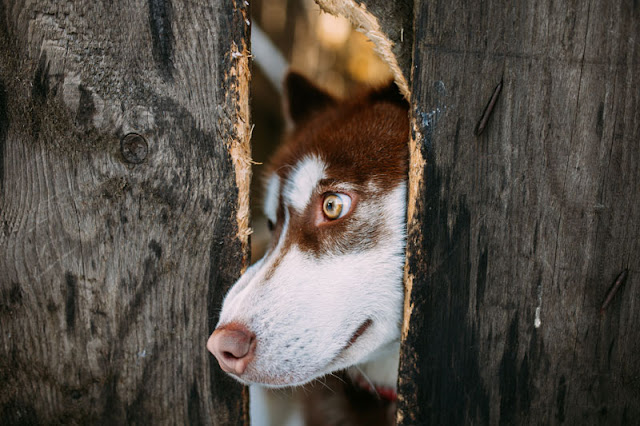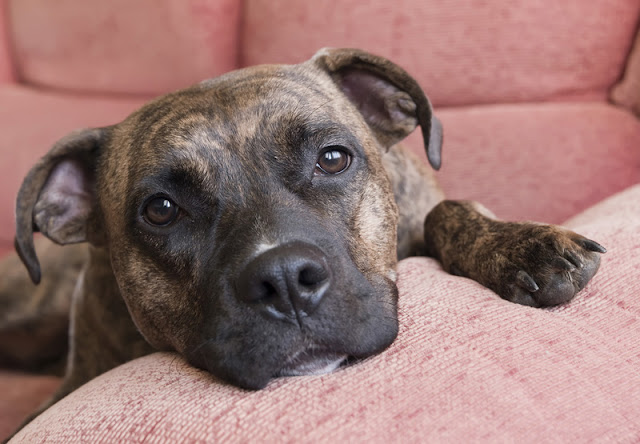The Best Enrichment for Your Dog and Cat Involves the Nose
Scent activities can be an important positive experience for your pet. Here's why, along with ideas to try with your dog or cat.
 |
| Photos: Simonovich Inna and Luminoisty-images.com/both Shutterstock. |
One of the best ways to help ensure your dog or cat is happy is to give them opportunities to use their nose.
These days, when we think about good animal welfare, we’re not just talking about preventing cruelty. It also means giving them plenty of opportunities to have positive experiences and engage in behaviours that are natural for the species.
You won’t be at all surprised to learn that for dogs, opportunities to sniff are really important. After all, dogs have incredible noses. Dogs have such amazing noses that some of them are even trained to search for missing people, animal scat, truffles, or bacteria in a hospital setting.
As Alexandra Horowitz writes in her delightfully informative book Being a Dog (p2),
“Working dogs, trained to tell us what they naturally know, detect the presence of illegal substances and unwanted pests. But the dog also knows about the upcoming weather, the way afternoon smells, and whether you are sick or upset. Every inhaled gulp of air is full of information. It holds the odors of people who have recently passed by, leaving olfactory trails in their wake. It catches pollens and plant notes carried on the breeze. Each noseful captures the traces of animals who have walked, run, cowered, eaten or died nearby. It traps the electric charge and round humid molecules from distant rainstorms.”
What you might not know is that cats have amazing noses too. But if you think about it, perhaps that’s not too much of a surprise either. After all, if cats didn’t have us to provide meals for them, they would be using their nose as one of their senses to help them find a mouse or other prey for their lunch. And no doubt you’ve seen a cat rub their head on a piece of furniture or wall in their home, and experienced a cat bunting, or rubbing their head on you, perhaps softly or perhaps with a bit of a headbutt. And you’ll have seen a cat inhale the fragrance from a catnip toy and then roll around, as if in ecstasy, for a while.
In fact, an environment that respects the cat’s sense of smell is one of the five pillars of a healthy feline environment. This includes not subjecting them to unpleasant strong smells, like air fresheners, which let’s face it, are only aptly named when they are used in places full of the fog of cigarette smoke, sweat, and overcooked food…
Anyway, I digress.
Both dogs and cats have amazing noses, and that means that both species benefit from enrichment that gives them the chance to use their nose.
The best thing is that many of these enrichment opportunities are free or cheap. Here are some of my favourite ways to give dogs and cats the opportunity to use their nose.
Giving dogs opportunities to use their nose
Take them on a sniffari. Give the dog a smell walk in which they are allowed to follow scents with their nose, and you just follow along behind. So long as it’s safe, let them follow their nose; and let them linger over each spot as long as they wish. After all, the walk is for the dog!
Scatter treats in the grass. Find a nice, safe patch of grass and scatter treats for your dog to find.
A snuffle mat. Make or buy a snuffle mat and hide treats in the folds of fabric for them to ferret out with their nose.
Hide treats in a room, then let your dog in to find them. The first times, they might not know what’s going on, but don’t guide them to the treats; let them figure it out. They will catch on pretty quick, so on future occasions you will see them start to run into the room. If you want, you can use a verbal cue like “Find it!” to tell them there are treats to be found.
Nose work classes. Sign up for a scent work class near you. One of the great things about scent work is that it is suitable for reactive dogs because only one dog is in the arena at a time. But these days there are online options too, which means you and your dog can take the class from the comfort of your own living room.
Giving cats opportunities to use their nose
A sensory box. Cats who live indoors-only don’t have the opportunity to follow their nose outside, but you can always bring aspects of the outside to them. Get a box and go outside to find safe items, like stones, pine cones, bits of plant, and so on. Put the box inside somewhere where your cat will find it. Let them choose whether or not to come and have a sniff.
A snuffle mat. These are easily available at pet stores these days, and easy to make yourself too. There’s no reason why dogs should be the only ones to enjoy them. This will likely be a very new activity for your cat, so be sure to use plenty of tasty treats to encourage them to investigate.
Hide treats in a room, then let your cat in to find them. Just as with dogs, the first few times they may not know what to expect. Let them find the treats in their own time. If you make this a regular activity, they will get the hang of it and start rushing into the room to find the treats when you open the door.
Nose work for cats. You can find online nosework classes for cats that you can take from home.
Catnip, silver vine, Tatarian honeysuckle, and valerian are all substances that many cats enjoy. While catnip is well known, the others are less common. The thing to know is that what your cat will respond to is a very individual thing. The catnip response is genetic, but if your cat doesn’t respond to catnip, they could still respond to one or more of these other substances. So it’s worth giving them a try to see if your cat likes them!
Hopefully this post gives you a few ideas, but there are plenty of other ways to give your dog or cat positive experiences that involve their sense of smell. As with anything, always give your pet a choice of whether or not to engage with a particular enrichment activity. And if it’s an activity that’s a bit of a puzzle, always make it as easy as possible to start with (lots and lots of smelly treats in that snuffle mat, for example).
What’s your favourite smell-related enrichment activity to do with your dog or cat?
Further reading:
- Making your pet happy is all about meeting needs (and recognizing individual personalities)
- Finding hidden food in nosework increases dogs' optimism
- The benefits of nosework for 'naughty' and 'reactive' dogs
- What your cat's nose knows
- Why does your cat rub their head on you?




